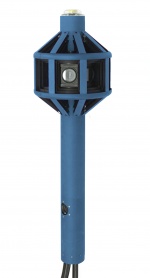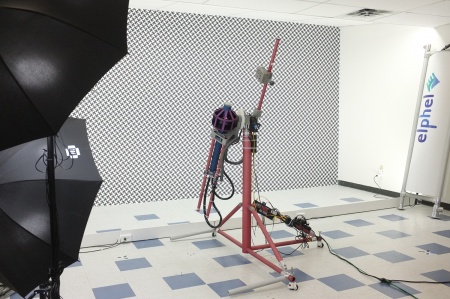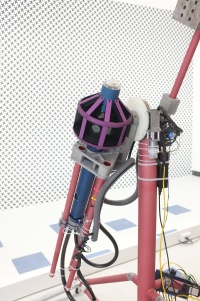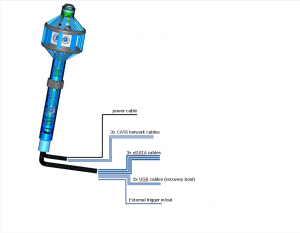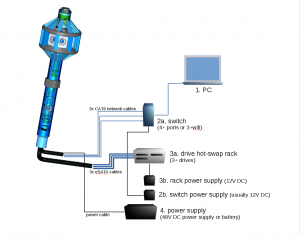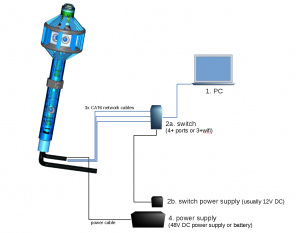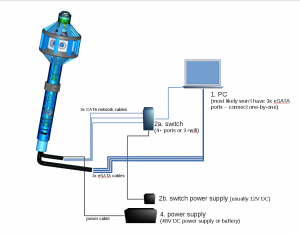Eyesis4Pi 393
Contents
[hide]Status
Production
Overview
| Elphel Eyesis4Pi-26-393 is the newer generation of the full-sphere multi-camera systems for stereophotogrammetric applications. The camera is calibrated to compensate for optical aberrations allowing to preserve full sensor resolution over the camera FoV. Distortion calibration is performed for precise pixel-mapping to automatically stitch images into panoramas, and also for photogrammetryand 3D reconstruction.
There are 24 x 5MPix sensors in the camera head, resulting in 120 MPix image acquisition. Panorama image resolution after stitching is 64 MPix. High-precision Inertial Measurement Unit IMU (ADIS 16375, 2400 samples per second) is integrated with the camera, as well as 5Hz GPS (Locosys LS20031) to provide precise position and orientation of the camera. Images, synchronized with IMU and GPS data, are recorded to internal Solid State Drives (SSD) or to an external computer over the network. Eyesis4Pi camera system includes Eyesis computer for image downloading and post-processing with pre-installed SDK and Free and Open Source Software for camera calibration, image acquisition and panorama stitching. Eyesis4Pi can be mounted on a car for outdoor panoramic applications or carried by a person, which lets successfully create panoramas of small and narrow spaces.** Improvements over older generation Eyesis4Pi
|
Features
- 4*π (360x180) full sphere coverage
- 64 MPix panoramic image resolution after stitching
- Final panoramic image equirectangular projection dimensions - 14000x7000
- 0.05 Pix stitching precision
- Calibrated fixed lens to compensate for the lenses distortions
- 10" (0.1 pix) in the center 80% x 80% area
- 30" (0.3 pix) maximal error over the full FoV
- <0.03um/° thermal expansion
- 5 FPS - maximum frame rate
- Integrated high-precision IMU and GPS
- Recording to:
- internal SSDs
- external SSDs
- to PC over network
- Web Based GUI
- Free Software and Open Hardware
Calibration
We have developed full calibration process and post-processing software to compensate for optical aberrations, allowing to preserve full sensor resolution over the camera FOV, and distortions – for precise pixel-mapping for photogrammetry and 3D reconstruction. Check out this Elphel Development Blog post for more details.
3D Model
|
